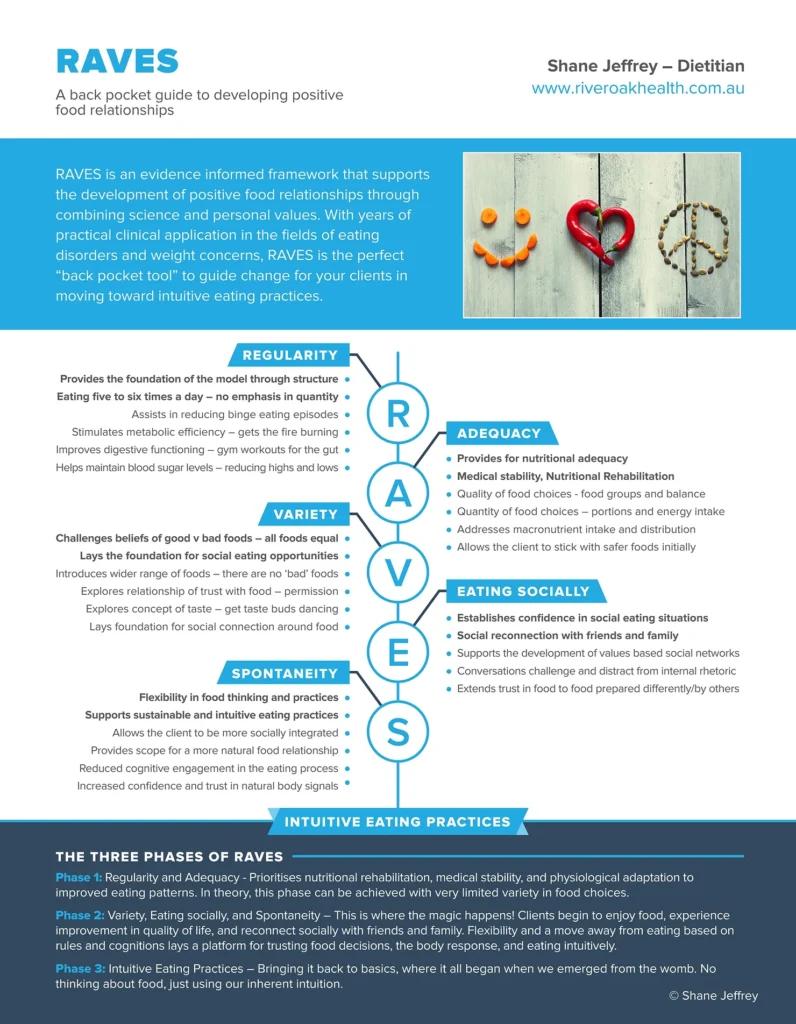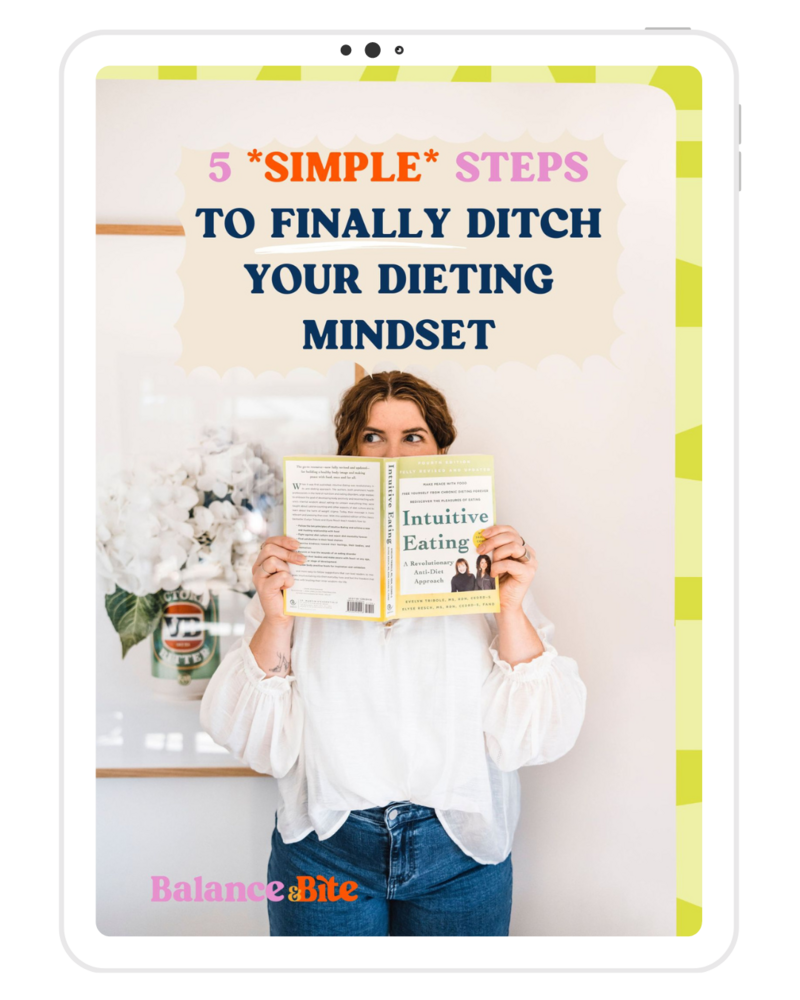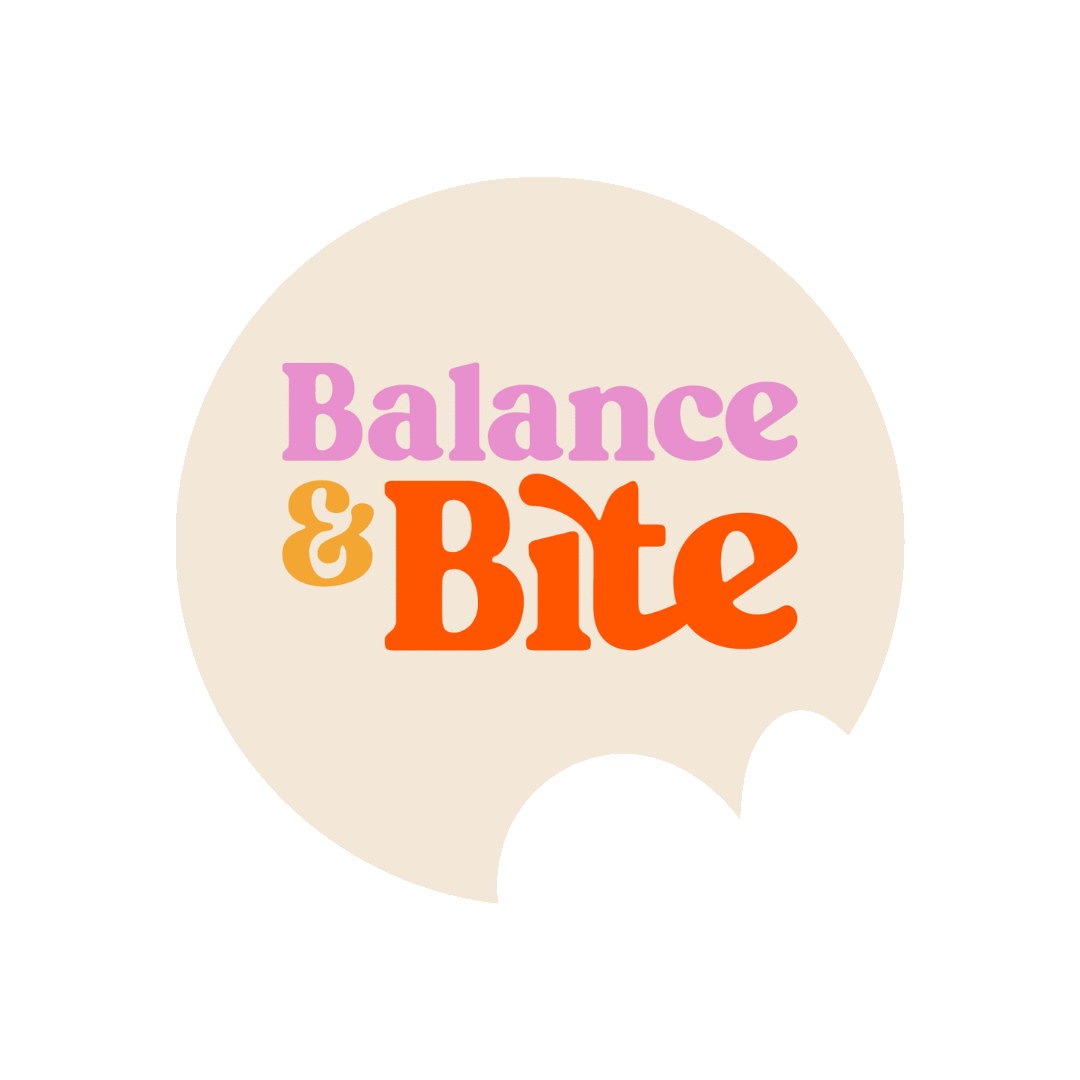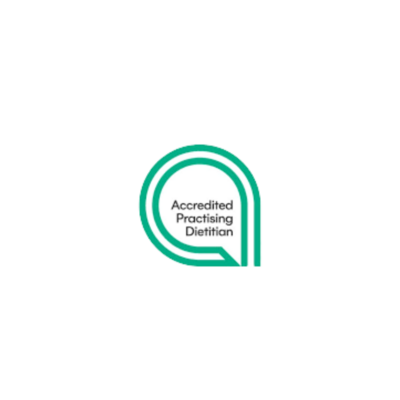When you start working with a dietitian to help you recover from your eating disorder, it’s normal to feel scared. There’s often an idea that we’ll tell you to stop doing everything you’re doing, to make you change everything straight away, or worse, to make you let go of all structure.
We use an evidence-based RAVES model, which helps create structure and safety in eating disorder recovery and nutrition rehabilitation.
What is the RAVES model?
The RAVES model (developed by Dietitian Shane Jeffrey) is a step-by-step process and evidence-based eating disorder treatment. It includes five steps: regularity, adequacy, variety, eating socially, and spontaneous eating.


Phase One – Nutritional Rehabilitation
Regularity
Before we even consider challenging food rules and beliefs, we focus on regular eating, ideally eating at least five to six times a day (e.g., Breakfast, Morning Tea, Lunch, Afternoon Tea, Dinner, and Supper). This step emphasises that it’s better to eat something rather than nothing.
The benefits of eating regularly
- Kickstarting the metabolism
- Reducing the likelihood of binge eating
- Improved digestive functioning
Adequacy
Once you’re eating five to six times a day and feeling confident managing this, we’ll next look at whether these meals or snacks meet your daily nutrition requirements. Rather than focusing on calories or weighing foods, we use a plate-by-plate approach that aims to include a source of carbs, protein, fibre, fat, and dairy in every meal (and ideally snacks).
The benefits of nutritional adequacy
- Medical stability
- Nutritional Rehabilitation
- Addresses macronutrient intake and distribution
- Allows the client to stick with safer foods initially
Phase Two – Improve relationship with food
Variety
When you are nutritionally rehabilitated and medically stable from eating regularly and meeting your nutrition requirements, it will be easier to start challenging your food rules, beliefs, and thoughts, such as introducing fear foods (slowly).
The benefits of food variety
- Challenges beliefs of good v bad foods
- Introduces a wider range of foods
- Explores the relationship of trust with food
- Explores the concept of taste
- Lays foundation for social connection around food
- Start to reduce the power food has over you
Eating socially
As you introduce more foods and reframe how you look at foods (not just good or bad), you’ll find it easier to eat socially with less anxiety.
When you’re in the midst of an eating disorder, going to a restaurant or having someone else cook for you can be incredibly scary due to a lack of control. This is your opportunity to relearn the joy of eating socially and feel more in control around food.
The benefits of eating socially
- Establishes confidence in social eating situations
- Social reconnection with friends and family
- Supports the development of values-based social networks
- Conversations challenge and distract from internal rhetoric
- Extends trust in food to food prepared by others
Spontaneous eating
You might not reach this step until 3, 6, or 12 months (or even years) into your recovery, and that’s normal. Eating spontaneously can feel daunting if you’ve spent most of your life using food as a structured, measured, and rigid tool to feel in control.
Benefits of spontaneous eating
- Flexibility and freedom around food food
- Reduced perfectionism and all-or-nothing thinking
- More sustainable approach to eating and food
- Reduced cognitive load in the eating process
- Increased confidence and trust in natural body signals
Phase Three – Intuitive eating (if appropriate)
Once you have moved through the RAVES model, you’re eating regularly, meeting your nutrition requirements, feeling confident eating around others, and eating with flexibility.
You can enhance your relationship with food and your body using intuitive eating. This might include learning more about gentle nutrition, finding joyful movement, challenging diet culture, or becoming more attuned with your hunger and fullness signals.
The benefits of intuitive eating
- Ultimate food and body freedom
- Sustainable to maintain due to flexibility
- Reduced mental load from constant food and body noise
- Increased confidence and trust in internal body signals
- Reduced reliance on external food opinions and comments, e.g. weight loss-driven narratives
Looking for a dietitian who uses the RAVES model?
Whether you’re recovering from atypical anorexia or binge eating disorder, our Dietitian adopts the RAVES model and intutive eating to help you set clear, realistic and empowering goals that link back to your core values.
Book an appointment or get in touch to work together.


Erin’s an Accredited Practising Dietitian & Certified Intuitive Eating Counsellor. She uses a non-diet approach and weight-inclusive care to help her clients reclaim a healthy relationship with food and their bodies free of guilt, shame and restriction.












View comments
+ Leave a comment